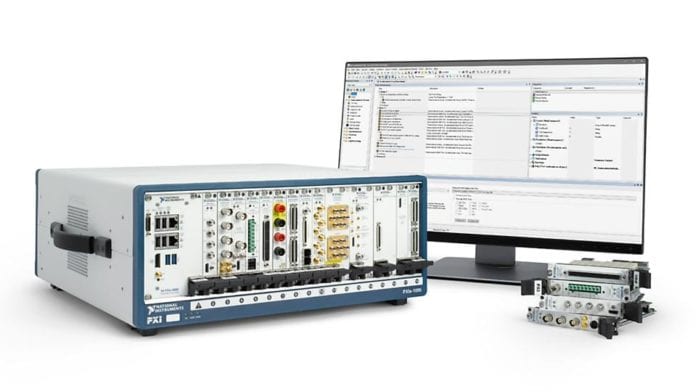National Instruments and IP-software startup NanoSemi are collaborating to add NanoSemi’s linearizer to NI’s PXI systems to help test 5G New Radio front-end designs. The addition will streamline some of the advanced 5G testing and add machine-learning capabilities through digital pre-distortion algorithms.
The target customers are developers of 5G RF power amplifiers (PAs) and front-end modules (FEMs).
Linearizers are used to convert a nonlinear signal that might interfere with other components in a mostly linear backend into a better-behaved linear signal. For example, the power amplifier, an important component in any RF communications system, is a non-linear component in a linear world. Although ‘backing off’ the PA — running it at lowe -power — can mitigate some issues, a PA has other issues under more demanding conditions of 5G.
The digital pre-distortion (DPD) algorithm is frequently used to linearize components.
“DPD is one of the most cost-effective linearization techniques,” according to a Keysight blog. The NanoSemi Linearizer software “complements existing NI-RFmx DPD algorithms that already include lookup table and memory polynomial approaches, and is available through online software download on the LabVIEW Tools Network,” said the NI/NanoSemi press release.
5G NR front-end designs are more complex than LTE or LTE Advanced. As David McQueen, research director, ABI Research and Malik Saadi, managing director and VP, strategic technologies, ABI Research, wrote for RCR Wireless News last year, “a high-end smartphone today, supporting 2X carrier aggregation, has around 7X the number of discrete RFFE [RF front-end] components compared with a standard 3G device, and this number is poised to double with the move to LTE-Advanced Pro and could more than quadruple as networks migrate to 5G.”
NI, maker of Labview, has software platforms with graphical user interfaces for automating equipment and signal tests. NI’s PXI system is a modular set of hardware: a chassis provides power, cooling, and communication bus for modular instruments or I/O modules.
“NI’s software-defined approach to test and measurement makes PXI an ideal platform to integrate the industry’s most advanced linearizer,” said Nicholas Karter, vice president of product management at NanoSemi in a press release. “Together with NI hardware, we believe this solution will enable engineers to develop deeper insight into the performance of 5G PAs under extreme linearization conditions and ultimately help them improve the time to market of 5G New Radio front-end designs.”

